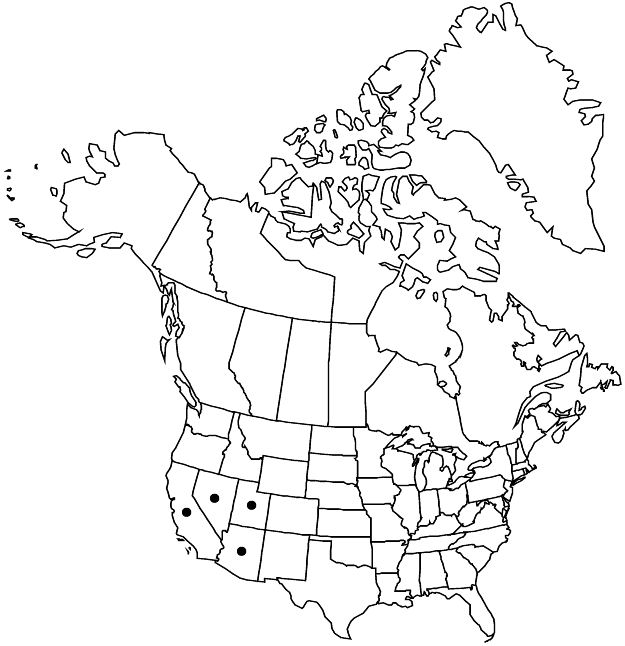Cucurbita palmata
Proc. Amer. Acad. Arts 11: 137. 1876.
Plants perennial; roots tuberous. Stems prostrate, often rooting adventitiously at nodes, to 2 m, villous-hirsute to hispid-hirsute with deflexed hairs, glabrescent and muriculate on angles in age; tendrils mostly 3 (–5) -branched 1–1.5 cm above base, retrorsely hispid, gland-tipped. Leaves: petiole (2–) 3–7 cm, densely hispid-hirsute with short, deflexed hairs mixed with pustulate hairs; blade suborbiculate to depressed-ovate, palmately 5-lobed, sinuses 1/2–2/3 to petiole, 3–7 × 4–10 cm, usually broader than long or equally so, base cordate, lobes lanceolate-acuminate to triangular or triangular-lanceolate, sometimes irregularly sublobed, margins remotely crenate to remotely serrate-crenate, surfaces appressed-hispid abaxially and muriculate, hirsute-strigillose to hispid-strigose adaxially, midvein and major veins whitish adaxially from densely hispidulous-strigillose with white hairs, eglandular. Peduncles in fruit shallowly 5-ribbed, not abruptly expanded at point of fruit attachment, 3–8 cm, spongy. Flowers: hypanthium cupulate to campanulate, 2–7 (–20) mm; sepals linear-subulate, 2–10 mm; corolla golden yellow to yellow, tubular-campanulate, 2.5–5 cm; anther-filaments glabrous; ovary densely pubescent. Pepos dull green, narrowly 10-striped and white-mottled, ellipsoid-globose to globose or depressed-globose, 7–10 cm, smooth. Seeds dull white, ovate to oblong, 9–14 mm, margins thickened-raised, surfaces smooth or slightly rough. 2n = 40.
Phenology: Flowering (Feb–)Apr–Sep(–Oct).
Habitat: Rocky lake shores, washes, stream beds and overflow channels, lava beds, roadsides, waste places, alkali plains, creosote bush scrub, saltbush scrub, grassland-saltbush scrub, annual grasslands, chaparral-desert scrub, upland desert scrub
Elevation: (-30–)200–1000(–1300) m
Distribution

Ariz., Calif., Nev., Utah, Mexico (Baja California), Mexico (Sonora)
Discussion
Some plants of Cucurbita palmata from Baja California and California have uniformly whitish gray, hirsute-strigillose adaxial leaf surfaces; these have been recognized as C. californica. Most plants from Arizona and eastern San Bernardino County, California, and some from elsewhere in Baja California and California, have the midrib and major veins whitish like those of C. digitata.
Selected References
None.
Lower Taxa
"equally" is not a number.